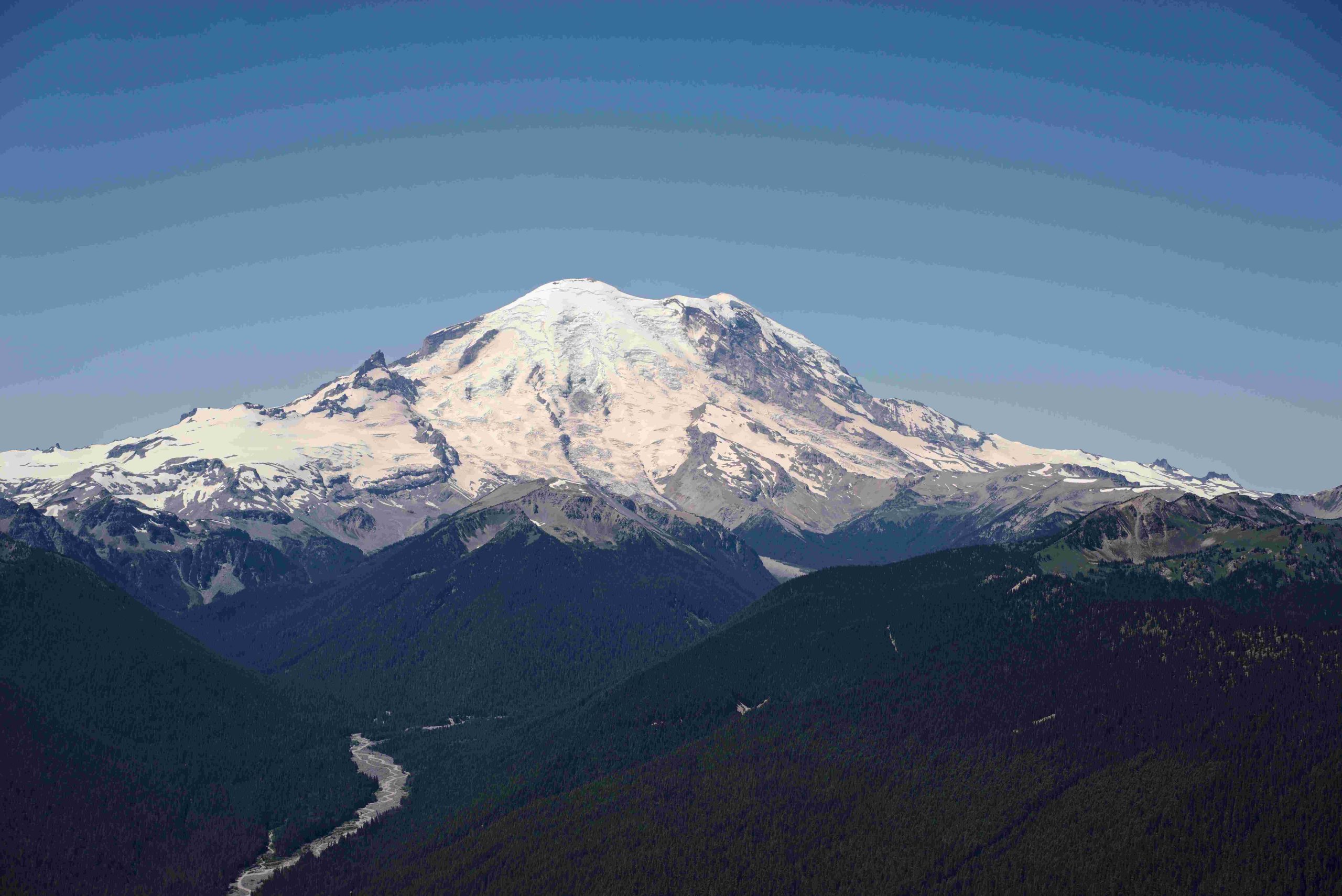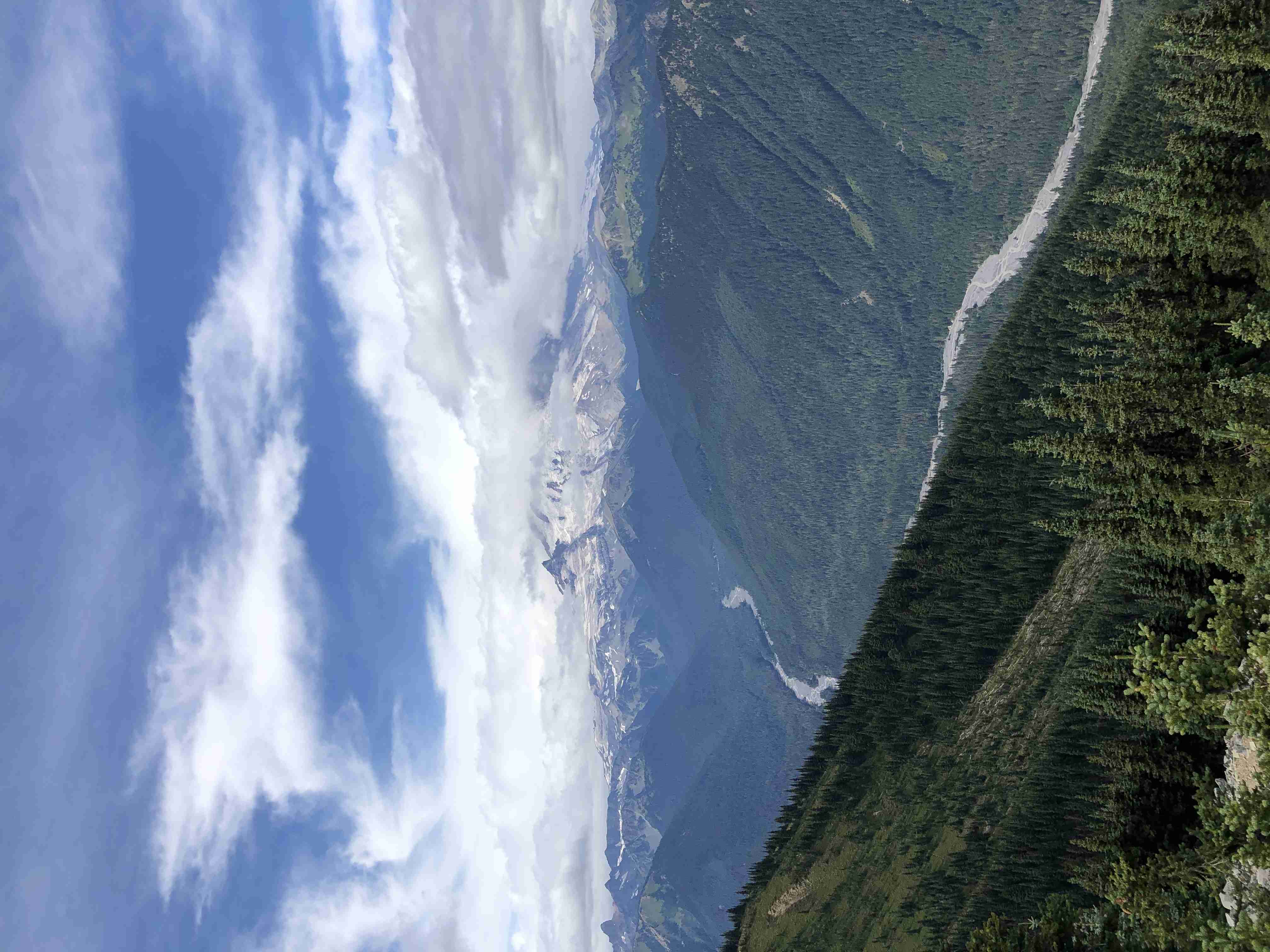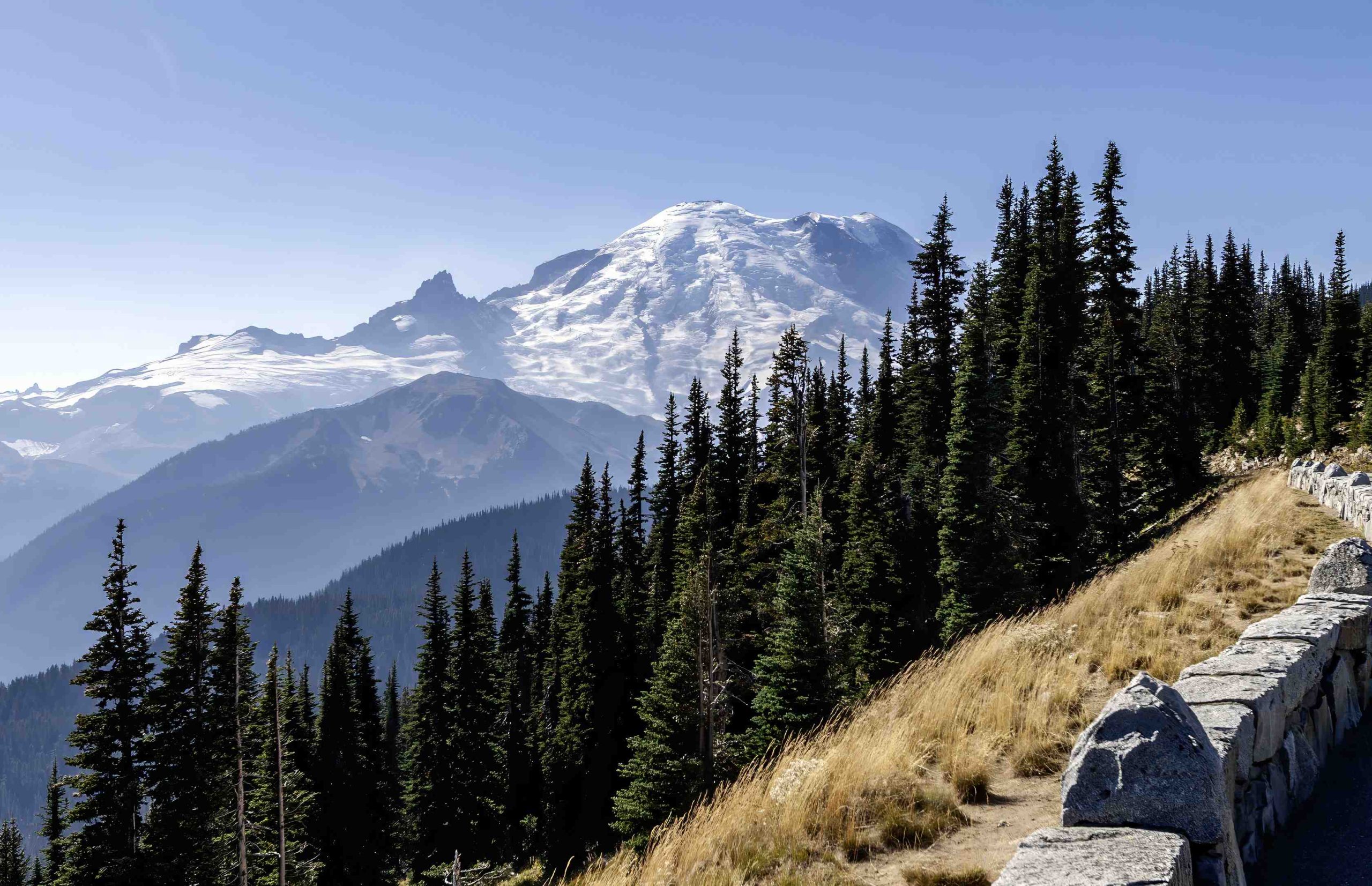Mount Rainier National Park boasts an impressive array of plant species, with over 890 vascular plants and 260 non-vascular plants and fungi. This diverse flora ranges from towering conifers in the forest zone to delicate alpine wildflowers near the summit. The park’s varied habitats, including forests, subalpine meadows, and alpine tundra, support a rich tapestry of plant life adapted to different elevations and environmental conditions.
What Are the Major Plant Zones in Mount Rainier?

Mount Rainier’s plant life is distributed across three main zones:
- Forest Zone: Lower elevations dominated by coniferous trees
- Subalpine Zone: Mid-elevations with a mix of trees and meadows
- Alpine Zone: High elevations with hardy, low-growing plants
Each zone hosts unique plant communities adapted to specific environmental conditions.
What Are the Dominant Tree Species in Mount Rainier’s Forest Zone?

The forest zone of Mount Rainier is characterized by towering conifers. Here are the primary tree species:
- Western Hemlock (Tsuga heterophylla)
- Douglas-fir (Pseudotsuga taxifolia)
- Western Red Cedar (Thuja plicata)
- Bigleaf Maple (Acer macrophyllum)
- Pacific Dogwood (Cornus nuttallii)
These trees form the backbone of the lower elevation forests, providing habitat for numerous plant and animal species.
What Plants Thrive in the Subalpine Zone?
The subalpine zone presents a transition between dense forests and open alpine areas. Key plant species include:
| Scientific Name | Common Name | Characteristics |
|---|---|---|
| Tsuga mertensiana | Mountain Hemlock | Dominant tree in subalpine areas |
| Abies lasiocarpa | Subalpine Fir | Common in subalpine forests |
| Picea engelmannii | Engelmann Spruce | Found in subalpine areas |
| Lupinus subalpinus | Subalpine Lupine | Dominant in subalpine meadows |
| Valeriana sitchensis | Sitka Valerian | Common in subalpine meadows |
These plants have adapted to survive harsh winter conditions and short growing seasons.
Which Plants Characterize the Alpine Zone?
The alpine zone, with its harsh conditions, hosts specialized plants adapted to extreme environments:
- Whitebark Pine (Pinus albicaulis)
- Rainier Pleated or Blue Gentian (Gentiana calycosa)
- Spreading Phlox (Phlox diffusa)
- Jeffrey Shootingstar (Dodecatheon jeffreyi)
These plants often form low-growing mats or cushions to withstand strong winds and cold temperatures.
What Are Some Unique Adaptations of Mount Rainier’s Plants?
Plants in Mount Rainier have developed various adaptations to survive in their specific habitats:
- Snow Survival: Subalpine fir and mountain hemlock can withstand heavy snow loads.
- Nutrient Efficiency: Some orchids, like coralroot, are parasitic saprophytes that thrive in nutrient-poor soils.
- Cold Resistance: Alpine plants often have waxy coatings or dense hairs to protect against freezing temperatures.
- Short Growing Season: Many alpine plants have accelerated life cycles to complete reproduction in the brief summer period.
What Are the Most Common Wildflowers in Mount Rainier?
Mount Rainier is renowned for its spectacular wildflower displays. Some common species include:
- Subalpine Lupine (Lupinus subalpinus)
- Bistort (Polygonum bistortoides)
- Paintbrush (Castilleja miniata)
- Glacier Lily (Erythronium grandiflorum)
- Avalanche Lily (Erythronium montanum)
These wildflowers not only create stunning visual displays but also play crucial roles in supporting pollinators and maintaining ecosystem health.
How Do Seasons Affect Plant Life in Mount Rainier?
The seasonal cycle dramatically influences plant life in Mount Rainier:
- Spring: Early bloomers like glacier lilies emerge as snow melts.
- Summer: Peak blooming season for most wildflowers in subalpine and alpine meadows.
- Fall: Trees and shrubs display autumn colors before winter dormancy.
- Winter: Most plants are dormant, protected by snow cover.
This seasonal rhythm is crucial for the park’s ecosystem and provides changing landscapes throughout the year.
What Conservation Efforts Protect Mount Rainier’s Plant Life?
While specific details on conservation efforts are limited in the sources, general practices include:
- Monitoring plant populations
- Controlling non-native species
- Protecting sensitive habitats
- Educating visitors about plant conservation
These efforts aim to preserve the park’s unique flora for future generations.
How Do Mount Rainier’s Plants Contribute to the Ecosystem?
The plants of Mount Rainier play vital roles in the park’s ecosystem:
- Soil Stability: Tree roots help prevent erosion on steep slopes.
- Wildlife Habitat: Plants provide food and shelter for various animal species.
- Water Cycle: Vegetation influences local hydrology through transpiration and water retention.
- Carbon Storage: Forests act as significant carbon sinks, mitigating climate change impacts.
Understanding these ecological roles underscores the importance of preserving Mount Rainier’s diverse plant communities.
In conclusion, the Mount Rainier plant list showcases a rich tapestry of flora adapted to the park’s unique environments. From towering conifers to delicate alpine flowers, this diversity not only creates stunning landscapes but also supports complex ecosystems. Continued research and conservation efforts are essential to protect and understand this botanical treasure for future generations.
References:
1. Flora of Mount Rainier National Park – NPS History
2. Plants – Mount Rainier National Park (U.S. National Park Service)
3. Wildflower Distribution in Mount Rainier National Park

